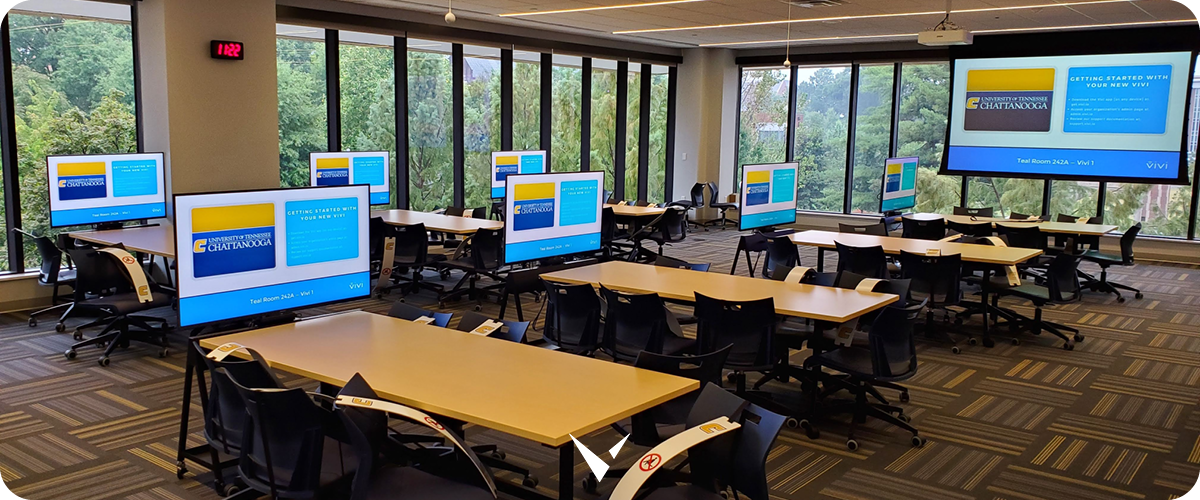
In every industry, the online and offline worlds are coming together. The classroom is no exception. Though COVID-19 has accelerated the implementation of hybrid learning, it was always set to play a big part in the future of education. In this post, we delve deeper into the world of hybrid learning, look at the impact on the students, and explore strategies to make the most of what can sometimes be a challenging learning environment.
Distance learning is not a new phenomenon by any means. For over a century, universities have offered degrees by correspondence, and children in remote locations have had their lessons delivered by post or over the airwaves.
But for many, COVID-19 brought the first taste of home learning. And they were the lucky ones; a third of the world’s schoolchildren were simply unable to access education when schools closed because of the pandemic.
All of a sudden, teachers with years of classroom experience found themselves in choppy and unfamiliar waters. They had to grapple with new technologies and the disappearance of face-to-face interaction. Unsurprisingly, many described the experience as exhausting, confusing, and debilitating.
But, as schools reopened, a new challenge emerged; the hybrid classroom.
What is a hybrid classroom?
Until 2020, learning had mainly been synchronous—students and educators were in the same place at the same time. Teachers in classrooms across the world employed tried and tested strategies to impart the curriculum to their students.
But when the global pandemic exploded, those long-held strategies were rocked to their very core. Suddenly, the goalposts moved. Almost overnight, teacher and student were forced to engage at a distance.
In some cases—particularly with younger age groups—this led to self-paced learning, an asynchronous approach where each student engaged in the same activity in separate locations and at different times. In other cases, student and teacher interacted virtually. Tools like Microsoft Teams, Google Classroom, and Zoom meant lessons still went ahead in something close to the original plan.
But, as schools reopened and responded to new requirements for social distancing, not all students were allowed onsite together. Approaches to teaching had to adapt and all eyes began to turn towards hybrid learning. As a strategy in which teachers were able to engage both remote and classroom-based students simultaneously, it had long been seen as the next step in the evolution of education. With a pandemic raging across the world, there would never be a better time to just take the plunge.
What are the challenges with hybrid learning?
The move to hybrid learning came with a new set of problems. By November 2020, more than 50 percent of teachers reported having covered only half—or less—of the content they should have during the year. The teaching methods they had practiced throughout their careers were no longer suited to hybrid environments. For example, a teacher whose preferred teaching style was to conduct much of the lesson on a static whiteboard, now needed to rethink their approach. Otherwise, those who were learning at home would simply be unable to follow what they were writing.
There were also practical issues. Never before had a teacher had to worry about being seen or heard in the classroom—no matter where they stood, they could engage with all students at any time. Suddenly, that was no longer the case. A teacher needed to be in front of a camera and microphone at all times.
How does hybrid learning impact students?
Instances of anxiety and depression in adults have increased significantly since society has become more isolated. And students are by no means immune; in the UK, 83% of adolescents with a history of mental illness believe the pandemic has made their condition worse. Similarly, a small survey of US university students showed almost three-quarters were experiencing higher levels of stress, anxiety, and depressive thoughts due to the pandemic.
Although hybrid learning allowed students to return—albeit in a reduced capacity—to the classroom, it didn’t necessarily end the isolation. For some, rostered attendance meant they might never be at school on the same day as their friends.
In addition, it became a challenge for students to maintain effective relationships with teachers. And these are important: studies have shown that attentive and engaged students perform better and that those who have close, positive, and supportive relationships with their teachers achieve more.
There were also obvious logistical challenges. Aside from the need to follow what was happening in the class, online students needed to engage and contribute to class discussions. In a face-to-face environment, that was merely a matter of raising a hand. In a remote setting, things were a little more complicated.
But make no mistake, hybrid learning also brought benefits. Firstly, it allowed schools to remain open under challenging circumstances. The alternative was prolonged home learning or even closure. Perhaps less obviously, it allowed some students to thrive. While many had suffered through home learning, others responded positively to the new environment. It was an opportunity to distance themselves from distractions, social challenges, bullying, and the pressures of school. For some students with learning difficulties, school became less of a struggle. Changes to the environment like, for example, the ability to listen to music while studying, even helped some to improve their concentration.
What is the best way to deal with the challenges of hybrid learning?
The concept of hybrid learning is still new for many teachers. As such, there is yet to be a definitive way of delivering it effectively. However, stories and research around how some teachers and learning institutions are tackling the challenges give us an excellent place to start.
Technology
Technology has a vital role to play in enabling hybrid education. To deliver synchronous learning, microphones, speakers, and cameras need to be positioned in a variety of positions around the classroom. Rooms need to be equipped with wireless screen-sharing tools like Vivi, so the students can see clearly what the teacher is presenting.
Of course, the more technology there is in the classroom, the greater the chance something will go wrong. To minimise the risk of disruption, teachers need to know how to perform basic troubleshooting routines. They should also make activities and instructions available in advance online, just in case the technology fails.
It goes without saying that not all teachers are comfortable with technology. Even in face-to-face environments, plenty of teachers have yet to fully embrace the tools at their disposal. As such, it’s important to make sure educators have regular training on the technology in their classroom and the optimal ways to use it. Students, too, may have difficulty navigating the instructional technologies they are presented with. They need support as they get to grips with the different platforms they need to use.
Technology also has a role to play in enabling student participation. Chat functions and the option to raise a virtual hand are essential for students to indicate they have a question or something to contribute. But ideas on how to incorporate these tools into the hybrid classroom vary. Suggestions include encouraging all students to be logged into the class in tools like Zoom and asking remote learners to communicate via chat rather than voice. Some also recommend that virtual learners partner with onsite students and collaborate on shared documents in tools like Google workspaces.
Content
Under normal circumstances, teachers might plan their teaching for a significant portion of the semester in advance. In the hybrid model, such medium-term planning may not be the best approach as some techniques may not work. As such, the recommendation is to plan just 1 – 2 weeks in advance.
Learning Technologies, an initiative of College of DuPage, Chicago, recommends considering the following when planning:
- Critically examine the learning objectives through the lens of hybrid learning.
- Consider which learning objectives would be best achieved online versus face-to-face.
- How to integrate the face-to-face and online components into a single course and how each will support the other.
- How to apportion the time spent face-to-face and online.
- How to assess student work in each medium.
In schools with rostered attendance, there could be longer periods than usual between seeing particular students. Therefore it can be hard to check that they remain on track and understand the subject matter. The suggestion is to break the content down into smaller chunks to make it easier to digest and simpler to confirm understanding.
People
Students are individuals. Each has their own stresses—for some, learning at home is less challenging than for others. Some will have problems scheduling their work, managing their time, and understanding the implications of what they are learning. They are also likely to have different abilities. It is essential to give sufficient support to those who need it and find ways to extend those capable of more. In our post, 5 things to try when teaching a hybrid class [link], we offer some tips on how to do this.
Maintaining a connection with remote students is difficult in a hybrid learning environment. Evidence shows emotionally supportive interactions help children develop a sense of wellbeing and security. But it may be hard to do this when the ability to interact face-to-face with students is limited. The Global Online Academy recommends that everyone log in online to every lesson—class-based and remote students alike. That way, all can interact through media like chat and are on equal footing in the classroom.
Strategies
A number of strategies are suggested for use in hybrid learning environments. Which is most appropriate depends mainly on the subject, activity, and the student’s ability.
Conclusion
The hybrid classroom might have come to education earlier than it otherwise would have, but it is here to stay. The challenge facing today’s teachers is how to develop and employ the right strategies to allow both groups of students to thrive.
During the journey, there will be plenty of opportunities to learn from what has worked well and, unfortunately, what hasn’t. But a constant focus on the student experience and ensuring everyone has access to the right technology should create the framework to succeed more often than not.



